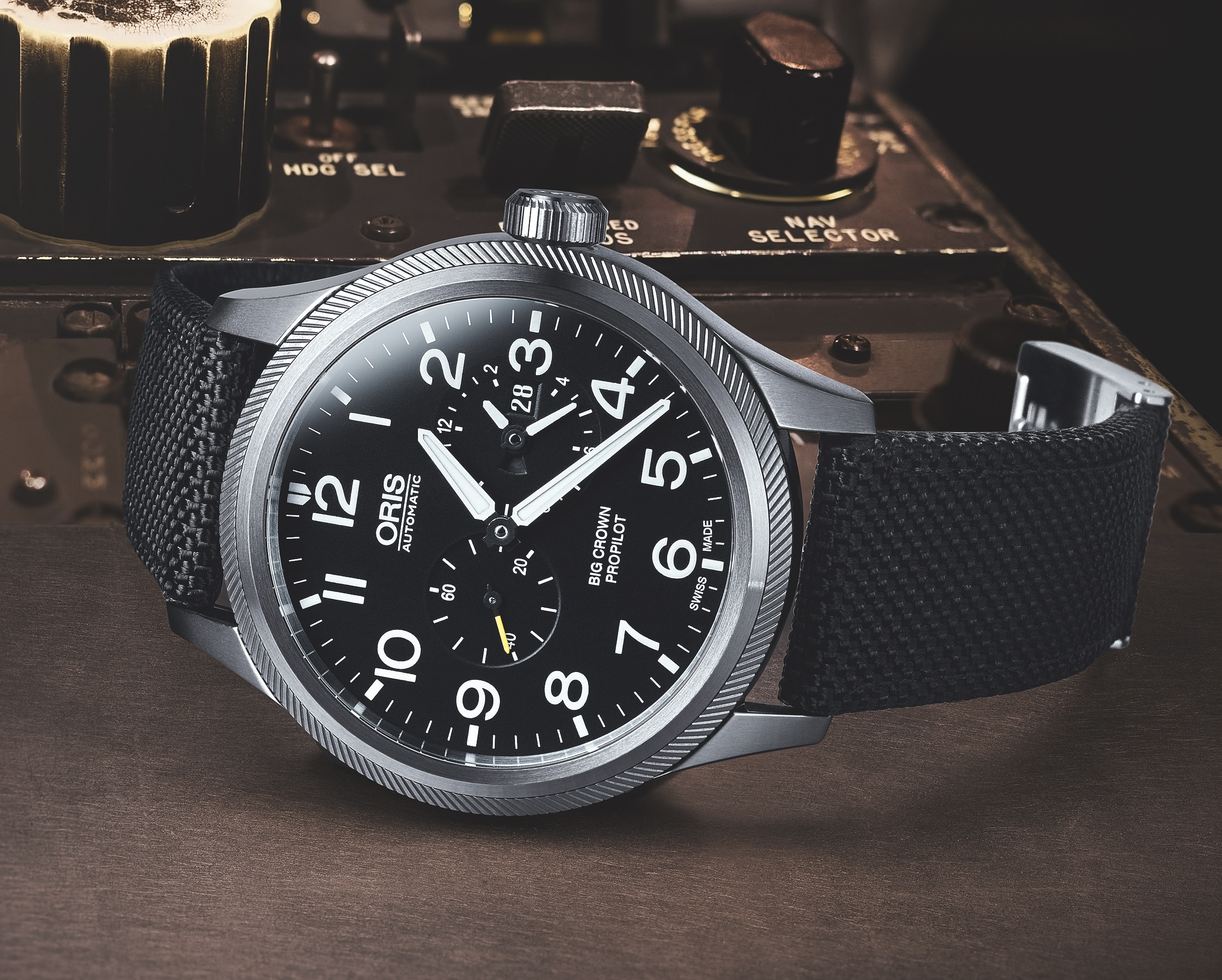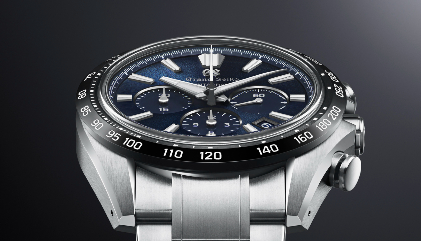A second time zone indicator ranks among the most useful watch complications, and not just for pilots and other people who fly frequently. But not all of these time-zone displays operate intuitively. They often have a 24-hour hand that can be reset in single-hour increments via the crown, but a watch of this kind may be better suited for frequent long-distance callers than for frequent flyers because when you’re spending time in a foreign country, you want to be able to read the local time from the ordinary hour hand in 12-hour format. If the central hour hand is adjustable in full- hour steps, you still need to pull out the crown first – and if you mistakenly pull the crown into the wrong position, you run the risk of setting the time incorrectly or temporarily stopping the watch.
Oris addressed this problem in 1997 and created the Worldtimer, a watch that lets its wearer operate two push-pieces to reset the local hour either forward or backward in full-hour increments. Even the date display automatically switches in both directions to show either the next date or the preceding date.
The Oris Big Crown ProPilot Worldtimer perfects the concept because the bezel now takes over the function formerly performed by somewhat bulky-looking push-pieces. Spiralling lines, like a turbine’s blades, cover this rotatable ring and give the bezel a non-slip surface that makes it easier to turn. A quick clockwise twist overcomes a spring’s resistance and triggers the ordinary hour hand for the local time to leap ahead one hour; a counterclockwise turn makes the same hand jump back an hour. This functions very well, although the user must exert a bit more force than expected. A practical detail: the date display automatically switches either forward or backward when the hour hand passes midnight. The subdial at 3 o’clock shows the time in the wearer’s home time zone. The day-night display occupies a little window here: if the aperture is orange, it’s OK to phone home; if it’s black, your family is probably asleep.
Otherwise, you operate this Oris like an ordinary wristwatch. If you pull the large crown into its first position, you can easily reset the home time (and simultaneously the local time); if you pull the winding button farther outward into its second position, you can speedily correct the date.
The complexity of the construction of the ProPilot Worldtimer’s case, in which the bezel operates the inner push-piece, isn’t visible from the outside. The height remains slim (13.5 mm), the diameter (44.7 mm) doesn’t look at all exaggerated, and the bezel makes a somewhat narrow impression. No crevice or other gap suggests that this ring can be rotated. All in all, Oris has designed and built a very solid and tidily crafted case.
Legibility is especially important for a pilots’ watch, which prompts us to ask: How well does the Oris perform in this crucial area? The curved sapphire crystal is anti-reflective on its underside, but it still reflects some light. Fortunately, the bold contrast between the hands and the dial assures that the time remains easy to read both day and night. The time in the second time zone isn’t quite as easy to read because the central hands pass over that subdial. The good news: this display is designed like an ordinary 12-hour dial with its own minutes hand, so it can be read intuitively and is a praiseworthy exception among watches that show the time in a second time zone. The date display is rather small, and it also must contend with the hands, four of which rotate above it and may at times cover it.
A clever arrangement results in a tidy dial with numerals that remain uncropped by other indicators. The inset subdials and the light orange accents go well with the matte black dial. The handsome, no-frills, pilots’ watch design continues on the satin-finished case with turbine spirals on the bezel and ends in the black textile wristband with a folding clasp reminiscent of the buckles on the seat belts in airplanes.
The clasp not only looks like a seat- belt buckle, it also works the same way, which contributes to its user-friendliness and ease of operation. First, like its airborne counterpart raising the part of the clasp labeled “Lift” opens the clasp, which otherwise stays closed. Second, a clamp mechanism varies the length of the wristband. This allows the wearer to precisely and quickly adjust the band’s length to accommodate any changes in the wrist’s thickness. The wristband feels rather stiff at first, but it becomes more flexible after a few days.
A window of mineral glass in the caseback reveals the basic caliber (ETA 2836), which looks somewhat small compared to the size of the case. Functionality takes precedence over embellishment here, although Oris’s trademark – a red rotor – swings back and forth above the movement.
Range and flight speed are important characteristics in aviation. With a 38-hour power reserve (not including transfusions of energy from the motions of the wearer’s wrist), this Oris is in the usual range for watches encasing standard movements. The precision is satisfactory, too: we measured an average daily gain of 5.5 seconds.
The sophisticated adjustment mechanism for the time zone is complex and leads to a somewhat higher retail price than Oris charges for its simpler models, which are also appreciated for their affordability. But $3,600 or Rs. 2.50 lakh (approx.) is still a very fair price to pay in return for all you get. A comparable, practical second time zone watch can cost significantly more money elsewhere. If you like the styling but can make do without a second time zone, $1,550 or Rs. 1.08 lakh (approx.), will buy you the Big Crown ProPilot Date. And if it’s too sporty for your tastes, you can choose the more elegant variation with an anthracite-coloured dial and polished bezel: this model also goes well with a business suit.
The Oris Big Crown ProPilot is the perfect companion for air travellers. It combines a practical and user-friendly second time zone, good legibility, down-to-earth pricing, and a handsome no-frills design.



















